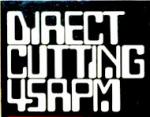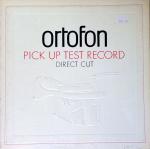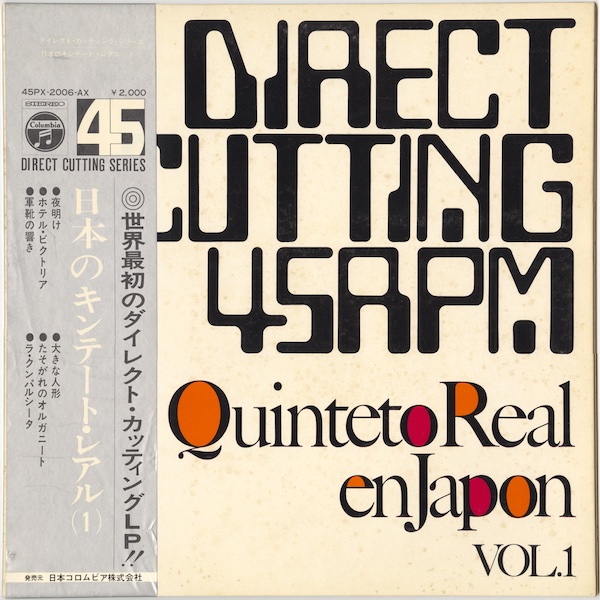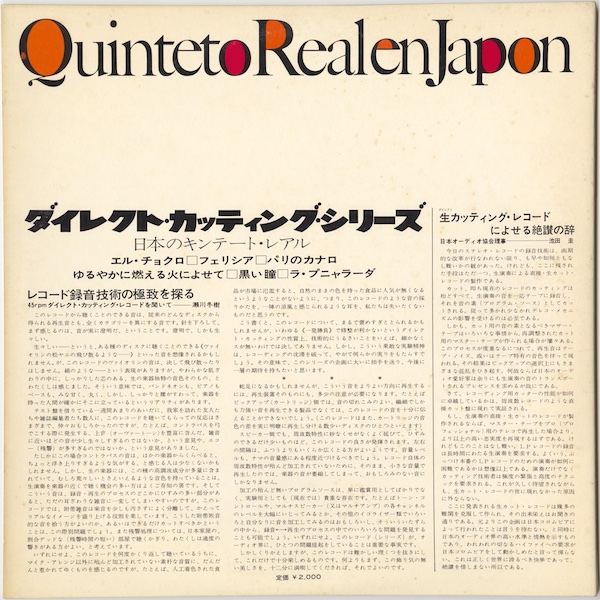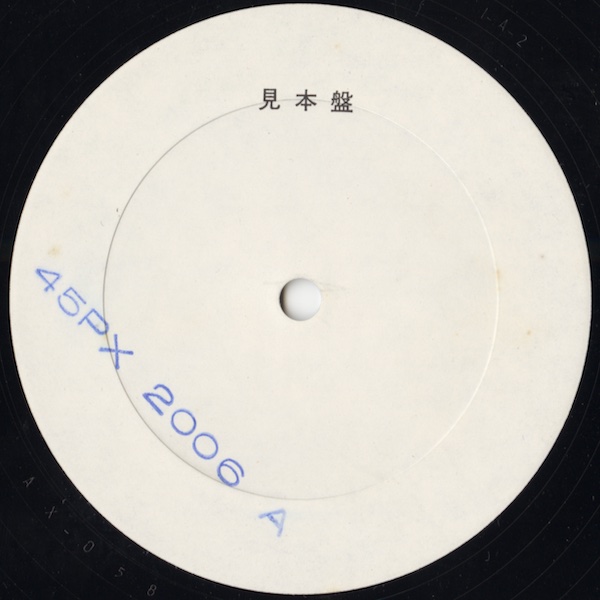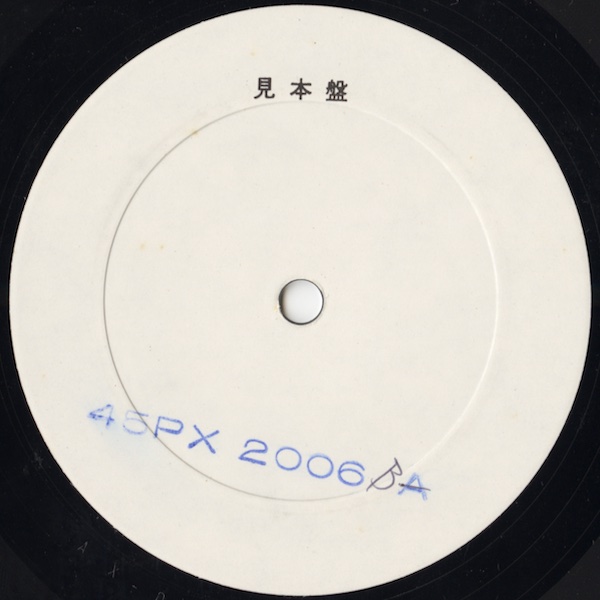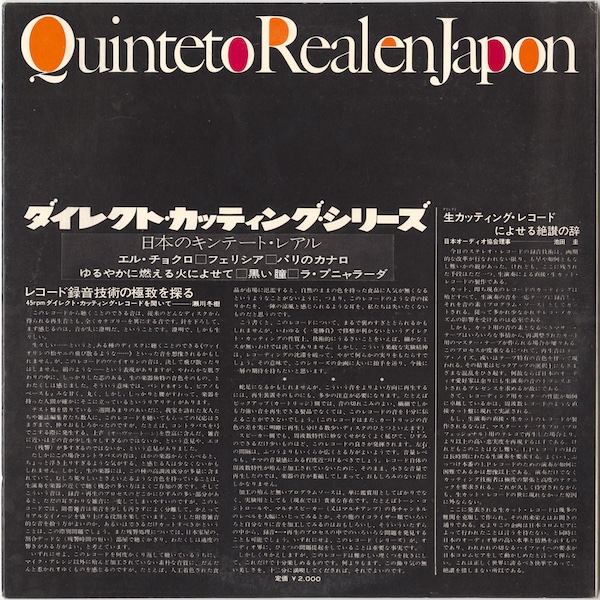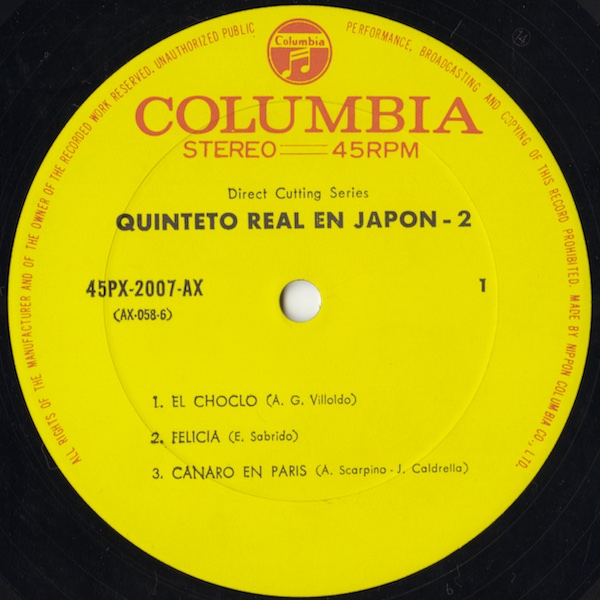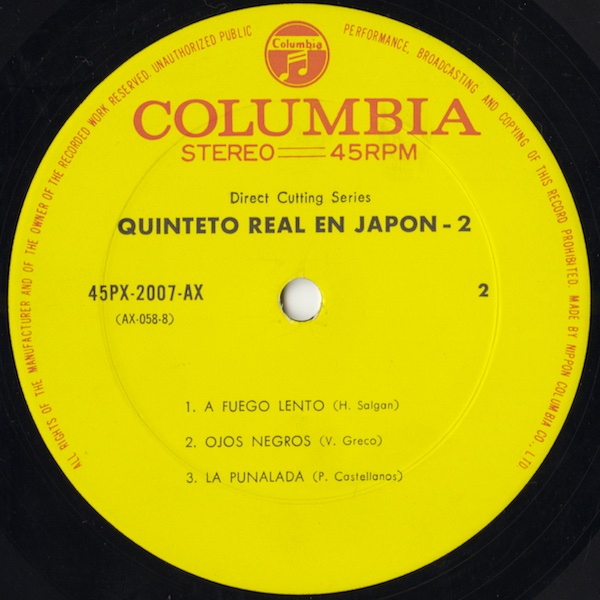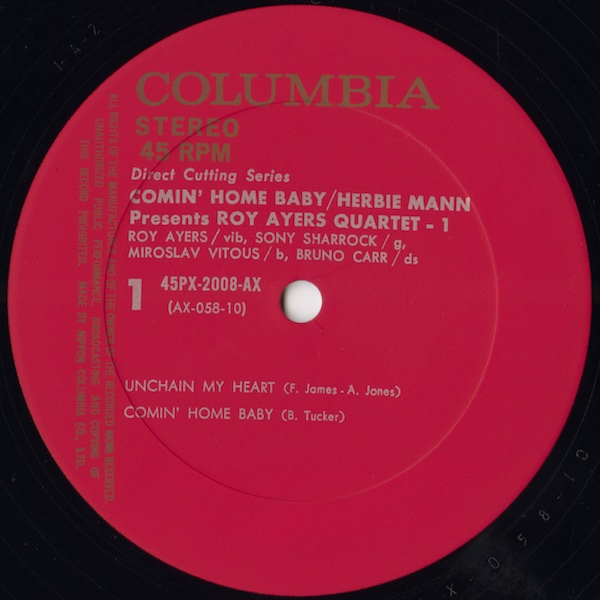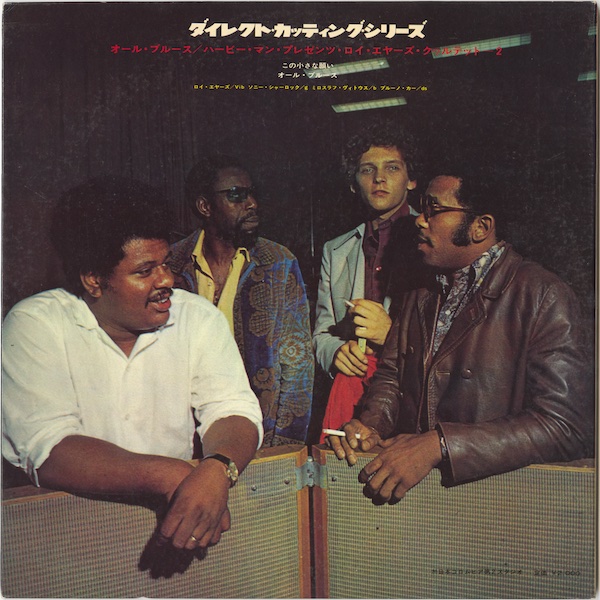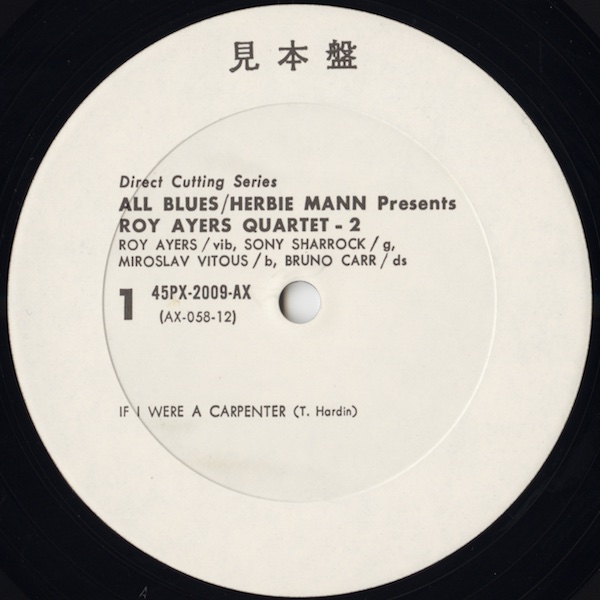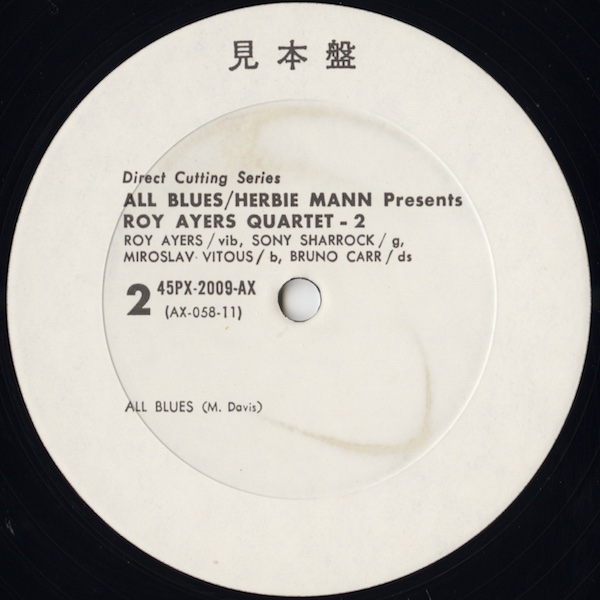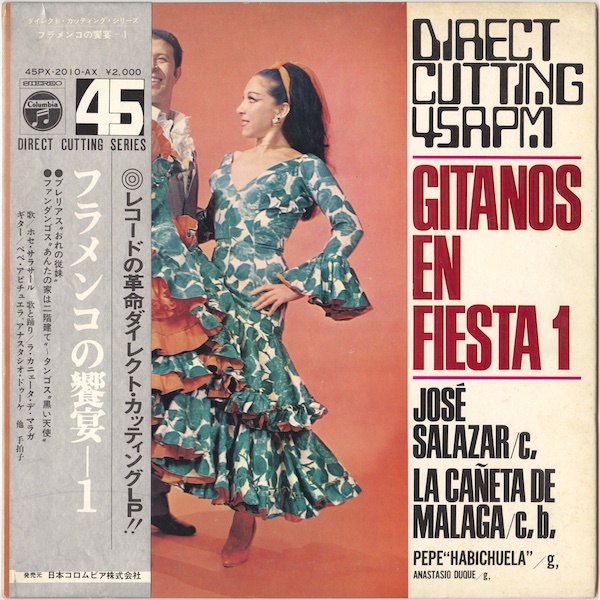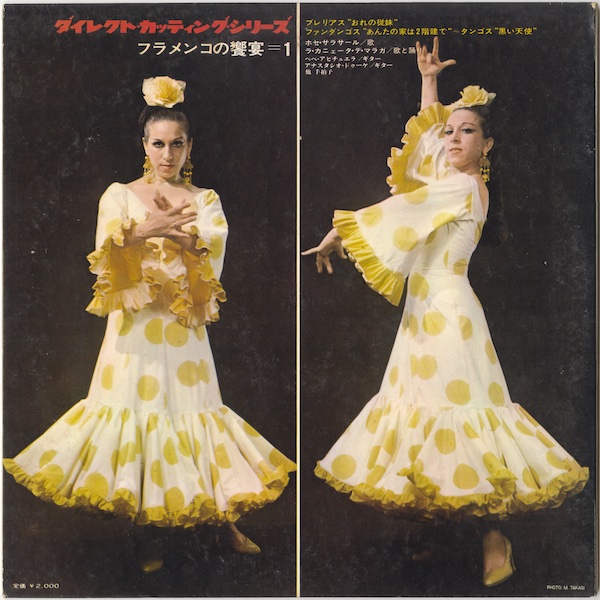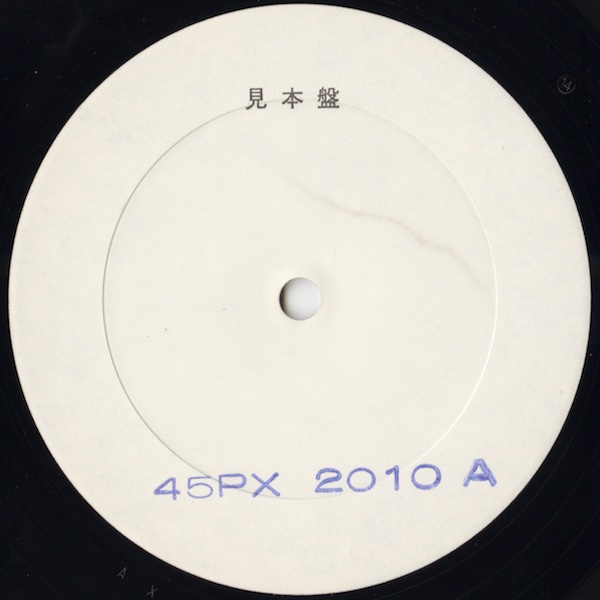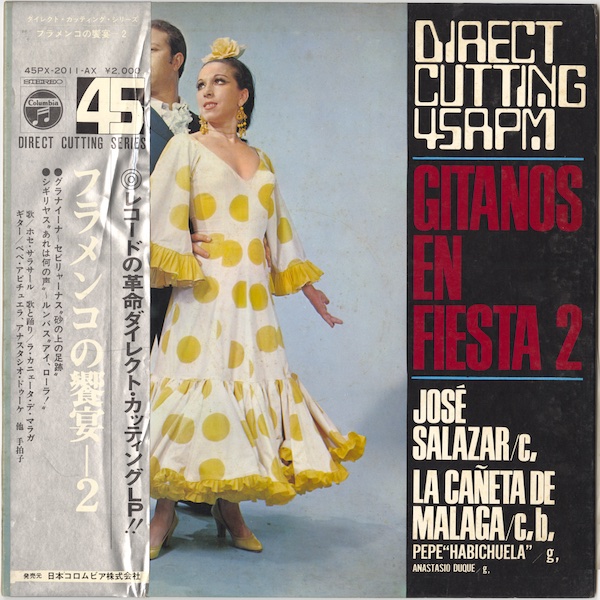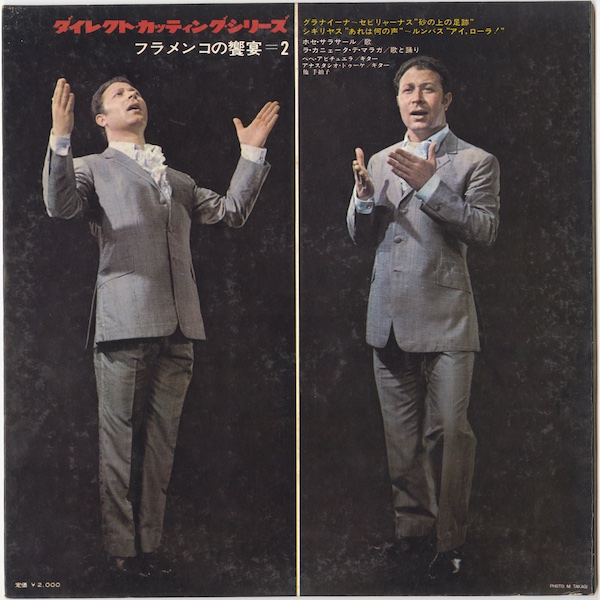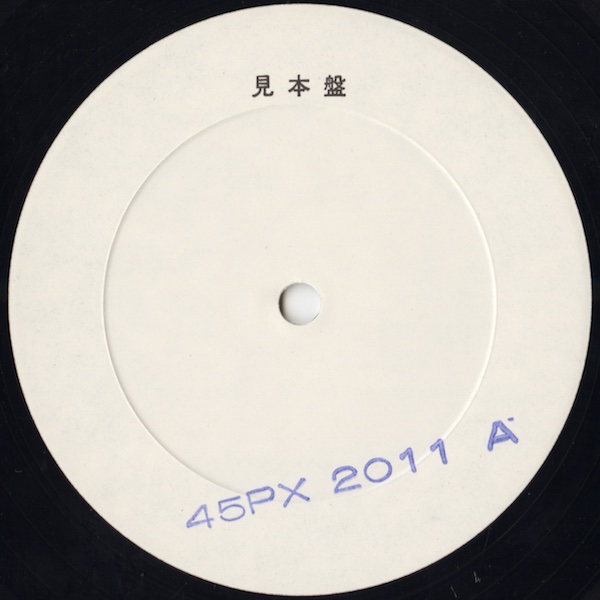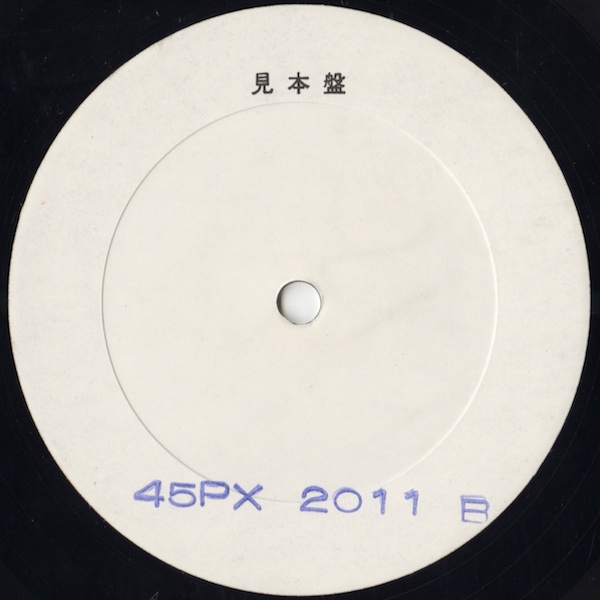In 1969, “the world’s first” “commercial” “Direct-to-disc” microgroove LP records were released, from the Nippon Columbia label. The “Columbia 45rpm Direct Cutting Series” consists of six 45 rpm Direct-to-disc albums.
「世界初」の「市販用」「ダイレクトカッティング」LPレコードがリリースされたのは1969年のこと、日本コロムビアレーベルからでした。シリーズ全6枚、すべて45回転でした。
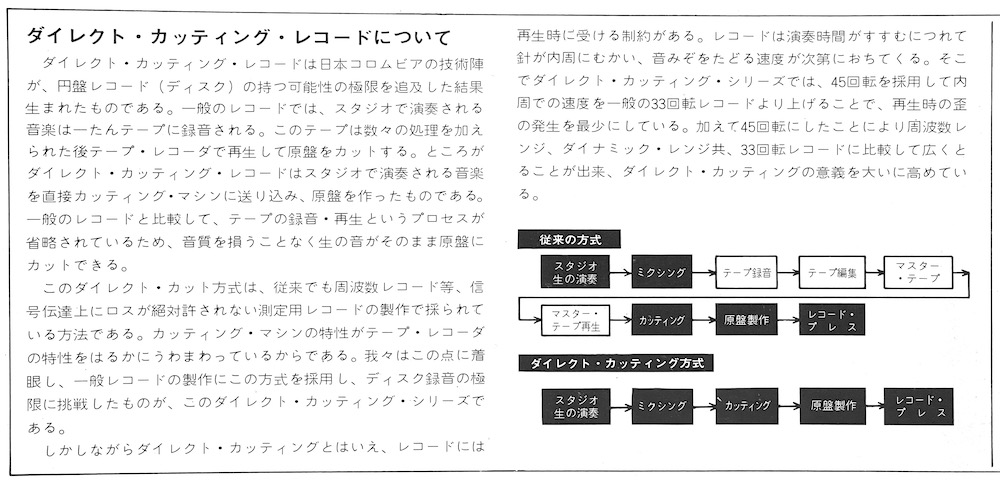
(from inside gatefold of 45PX-2008-AX)
This wonderful set (containing superb performances in wonderful sound quality) of six records are the very first examples of Direct-to-disc LP records – many of that were produced by various labels around the world and sold mainly in the 1970s.
1970年代に世界中のさまざまなレーベルから、主に「オーディオファイル向け」と銘打ってダイレクトカッティングレコードが大量にリリースされる先駆けとなるものです。実に生々しくそして素晴らしい演奏内容となっています。
Please note that almost all of the 78 rpms (until mid-1940s) were Direct-to-disc records; also, during the microgroove LP years, many of the audio testing records (primarily for audiophiles etc.) were also Direct-to-discs.
また、元々はSP盤の時代、1940年代前半までは、全てのレコードがダイレクトカッティングであったわけですし、LP時代に突入してからも、オーディオチェック用のテストレコードなどは、ダイレクトカッティングで製造されているものが多かったことも記しておきます。
Contents / 目次
Introduction
Direct-to-discs (a.k.a. Direct-cutting records) – a record made of lacquers that were directly cut from the audio signals (through the mixing console), not the sound being recorded on tape reels, not edited before the cutting process.
アナログオーディオマニアに人気(?)のダイレクトカッティング盤。演奏をオープンリールテープに録音したり編集したりせず、演奏したそのままをミキサーを通したのちラッカー盤に直接リアルタイムで記録し、そこからスタンパーを作りプレスします。
Until mid/late-1940s, almost all records (mainly 78 rpm shellac records) were recorded with Direct-to-disc technology – but later on, reel tapes became common for usability, editability and durability (nowadays the main recording media are hard drives, memory and cloud storages though). – Direct-to-disc once went obsolete, except audio testing records that contains various signals for the gears’ proper setting.
録音テープが使われるようになる1940年代後半までは、全てのレコード(主に78回転SP盤)がダイレクトカッティングでしたが、その後テープ(現在はハードディスクなどの記録メディア)への録音をした後、ミキシング・イコライジングを経てカッティングマスターテープ(データ)が作られ、これを使ってカッティングされるようになります。例外として、オーディオチェック用のテストレコードだけは、いぜんダイレクトカッティングで製作されていたようですが。
And in 1969, Nippon Columbia manufactured the first Direct-to-disc records (microgroove, 33 or 45 rpm) – the total of six 45rpm albums were made: two Algentina tango LPs, two Jazz LPs, and two Flamenco LPs. All were recorded at Nippon Columbia Studio 2, Tokyo, Japan.
で、LP時代(1949〜)に、世界で最初に市販用としてダイレクトカッティングレコードを製作したのは、前述の通り日本コロムビアでした。1969年に45回転のダイレクトカッティングシリーズが製作されました。アルゼンチンタンゴ (キンテート・レアル) 2枚、ジャズ (ロイ・エアーズ・カルテット) 2枚、フラメンコ (ホセ・サラザール) 2枚、計6枚、すべて東京の日本コロンビア第2スタジオで製作されました。
Quinteto Real en Japon Vols. 1 & 2
The first two Direct-to-disc records – ultrasmooth and melancholic Algentina tango – were released in June 1969 – recorded at Nippon Columbia’s Studio 2, Tokyo on February 5, 1969.
最初の2枚は流麗かつ感傷的なアルゼンチンタンゴ、1969年6月にリリースされました。録音は東京の日本コロムビア第2スタジオで、1969年2月5日に行われました。
Quinteto Real en Japon Vol. 1 Nippon Columbia 45PX-2006-AX A-1 El Amanecar / 夜明け A-2 Hotel Victoria / ホテル・ビクトリア A-3 Taquito Militar / 軍靴の響き B-1 La Gran Muneca / 大きな人形 B-2 Organito De La Tarde / たそがれのオルガニート B-3 La Cumparisita / ラ・クンパルシータ
Quinteto Real en Japon Vol. 2 Nippon Columbia 45PX-2007-AX A-1 El Choclo / エル・チョクロ A-2 Felicia / フェリシア A-3 Canaro En Paris / パリのカナロ B-1 A Fuego Lento / ゆるやかに燃える火によせて B-2 Ojos Negros / 黒い瞳 B-3 La Puñalada / ラ・プニャラーダ
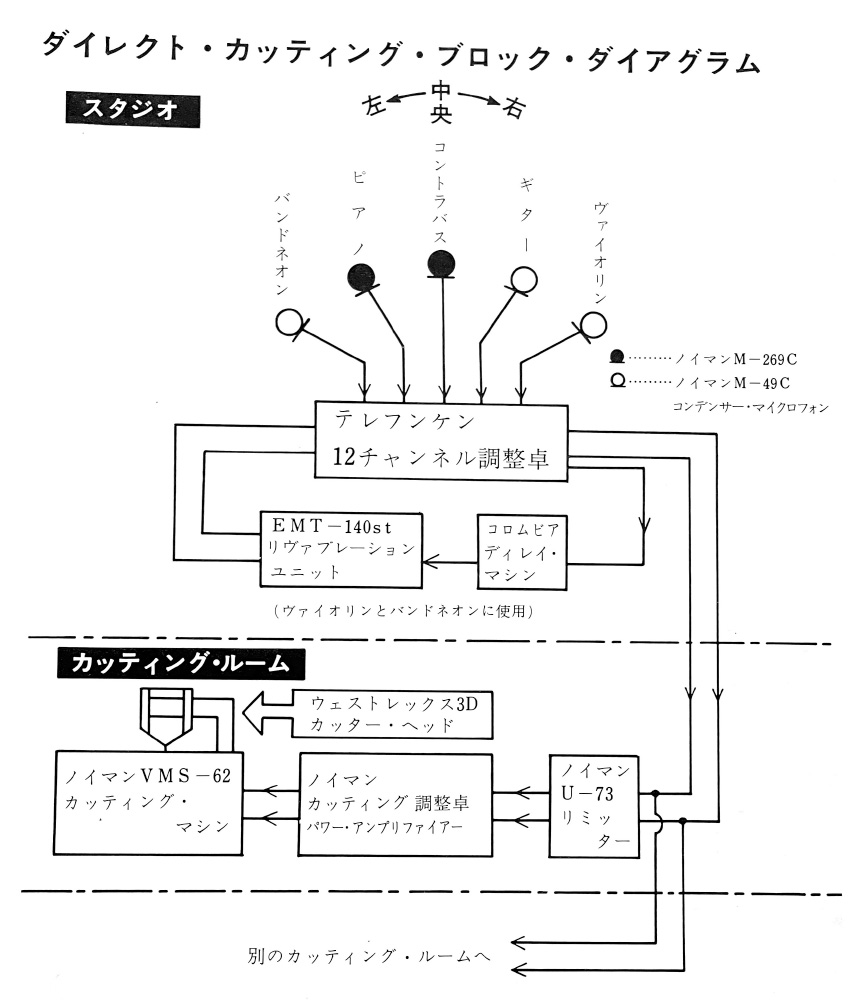
A truly enjoyable album. Quinteto Real is an Algentina tango group – seems like this group often came to Japan for concerts. Actually in 1964, they released two LP albums containing the performances recorded in Japan (PSS-93-C and PSS-94-C). These 1964 recordings were later issued on 2CD.
実に聴き応えのあるアルバムです。キンテート・レアル (Quinteto Real) は、アルゼンチンのタンゴグループで、日本にもよくコンサートに来られていたようです。実際、1964年にも日本コロムビアから日本録音のLPレコードが2枚リリースされています(PSS-93-C, PSS-94-C)。こちらの1964年録音は、のちに2枚組CDとしてリリースされています。
Herbie Mann Presents Roy Ayers Quartet Vols. 1 & 2
Next two records – a spine-chilling Jazz performances – were released in September 1969 – recorded also at Nippon Columbia’s Studio 2, Tokyo on July 6, 1969.
次の2枚は目が飛び出るほどフレッシュなジャズ、1969年9月にリリースされました。録音は同じく東京の日本コロムビア第2スタジオで、1969年7月6日に行われました。
Herbie Mann Presents Comin' Home Baby: Roy Ayers Quartet Vol. 1 Nippon Columbia 45PX-2008-AX A-1 Unchain My Heart A-2 Comin' Home Baby B-1 A Man ANd A Woman B-2 Scarborough Fair
Herbie Mann Presents All Blues: Roy Ayers Quartet Vol. 2 Nippon Columbia 45PX-2009-AX A-1 If I Were A Carpenter B-1 All Blues
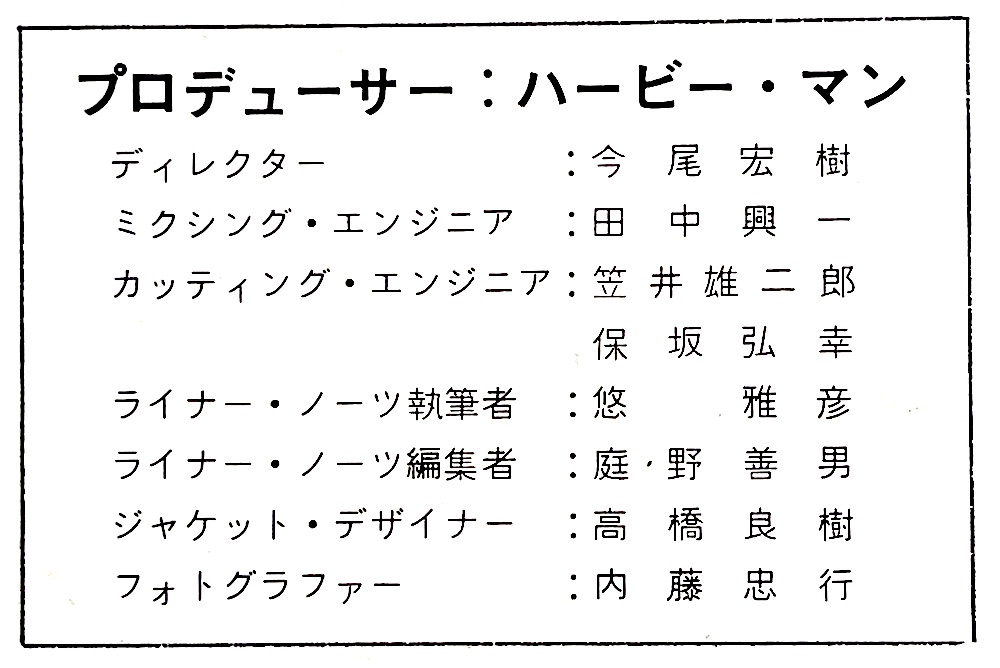
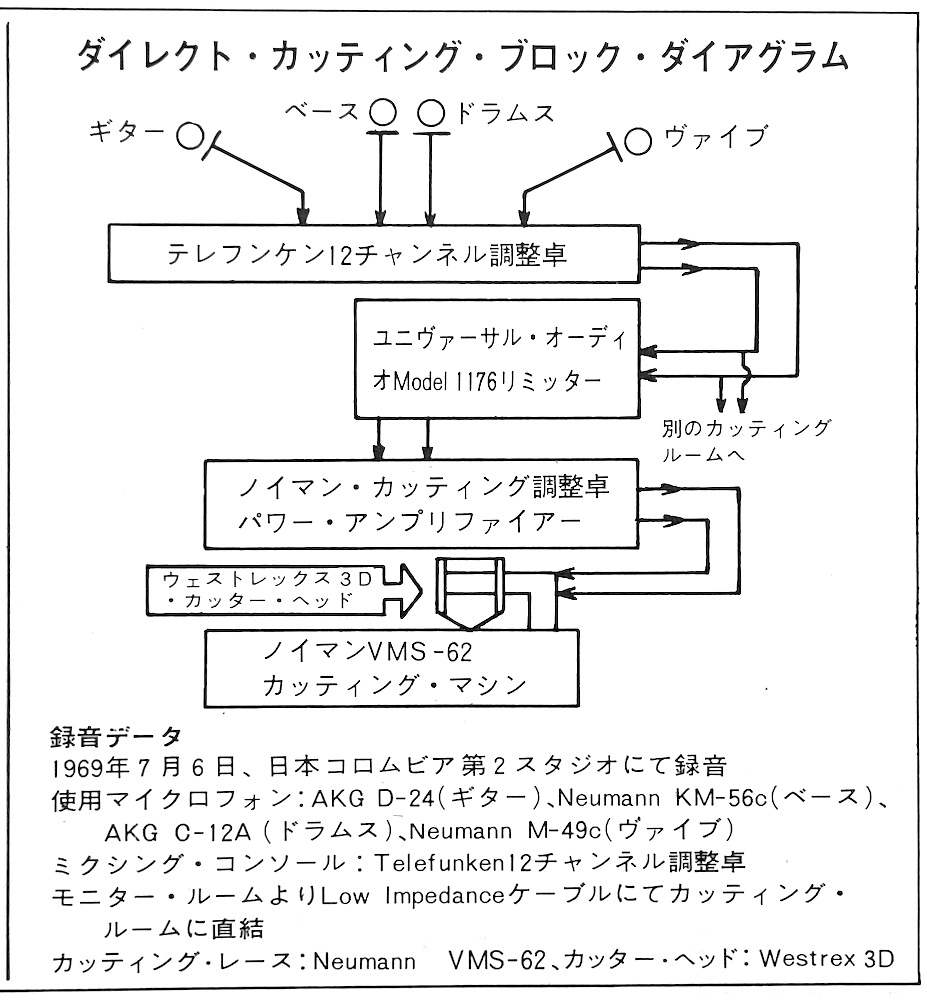
These astonishing recordings were done by the Roy Ayers Quartet – Roy Ayers on vibraphone, Sonny Sharrock on guitar, Miroslav Vitous on bass, and Bruno Carr on drums – that was the Herbie Mann Sextet (1969) minus Herbie Mann himself and Steve Marcus. Six tunes featured on these two Direct-to-disc records were also performed on the live recordings at The Whisky A Go-Go just one month ago “Live At The Whisky 1969 The Unreleased Masters” (different performance, of course…).
この弩級の演奏はロイ・エアーズ (Roy Ayers), ソニー・シャーロック (Sonny Sharrock), ミロスラフ・ヴィトゥス (Miroslav Vitouš), ブルーノ・カー (Bruno Carr) というカルテット編成の録音で、ちょうどハービー・マン (Herbie Mann) セクステットの1969年ラインアップから、御大とスティーブ・マーカス (Steve Marcus) を除いた構成となります。演奏されている6曲のうち、“A Man and A Woman” を除いた5曲は、ちょうどこのダイレクトカッティング盤2枚の1ヶ月前にウィスキー・ア・ゴーゴーで録音された「Live At The Whisky 1969 The Unreleased Masters」でも聴くことができます(もちろん別演奏です)。
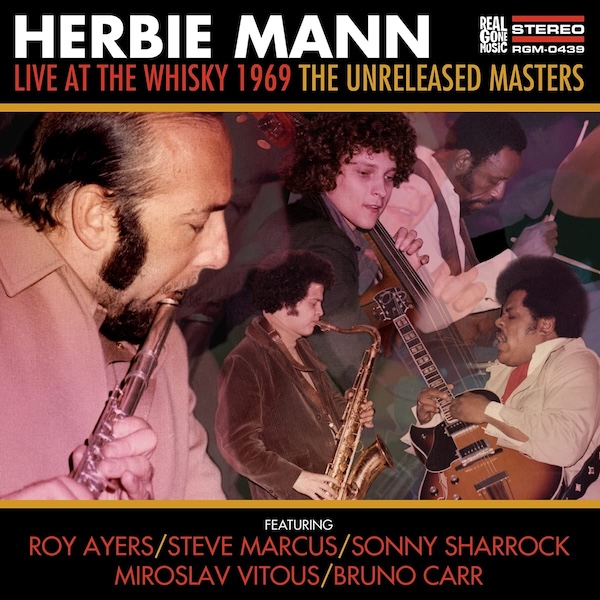
Gitanos en Fiesta Vols. 1 & 2
The last two albums – a fantastic Flamenco performance – are recorded also on July 6, 1969 (the same date as Roy Ayers), at the same Nippon Columbia Studio 2.
最後の2枚は強烈なフラメンコアルバム、これも1969年7月6日録音(ロイ・エアーズ達と同じ)、日本コロムビア第2スタジオです。
Gitanos en Fiesta Vol. 1 Nippon Columbia 45PX-2010-AX A-1 Tengo Una Prima Hermana / ブレリアス「おれの従妹」 B-1 Dos Pisos Tiene Tu Casa / ファンタンゴス「あんたの家は二階建て」 B-2 Angelitos Negros / タンゴス「黒い天使」
Gitanos en Fiesta Vol. 2 Nippon Columbia 45PX-2011-AX A-1 Granainas / グラナイーナ A-2 Sevillanas “Desentierra Tu Calle” / セビリャーナス「砂の上の足跡」 B-1 Siguiriyas “Que Voces Son Esas” / シギリヤス「あれは何の声」 B-2 Rumbas “Ay, Lola” / ルンバス「アイ、ローラ!」


Framengo guitar maestro Pepe Habichuela (2nd guitarist being Anastasio Duque), along with José Salazar on vocal, La Cañeta de Malaga on vocal and dance – very refreshing and live performance indeed.
フラメンコギターの名手 ペペ・アビチュエラ (Pepe Habichuela)、アナスタシオ・ドゥケ (Anastasio Duque) をバックに、ホセ・サラザール (José Salazar) が歌、ラ・カニェータ・デ・マラガ (La Cañeta de Málaga) が歌と踊りを担当、実にライブ感たっぷりの演奏と踊りを聴かせます。
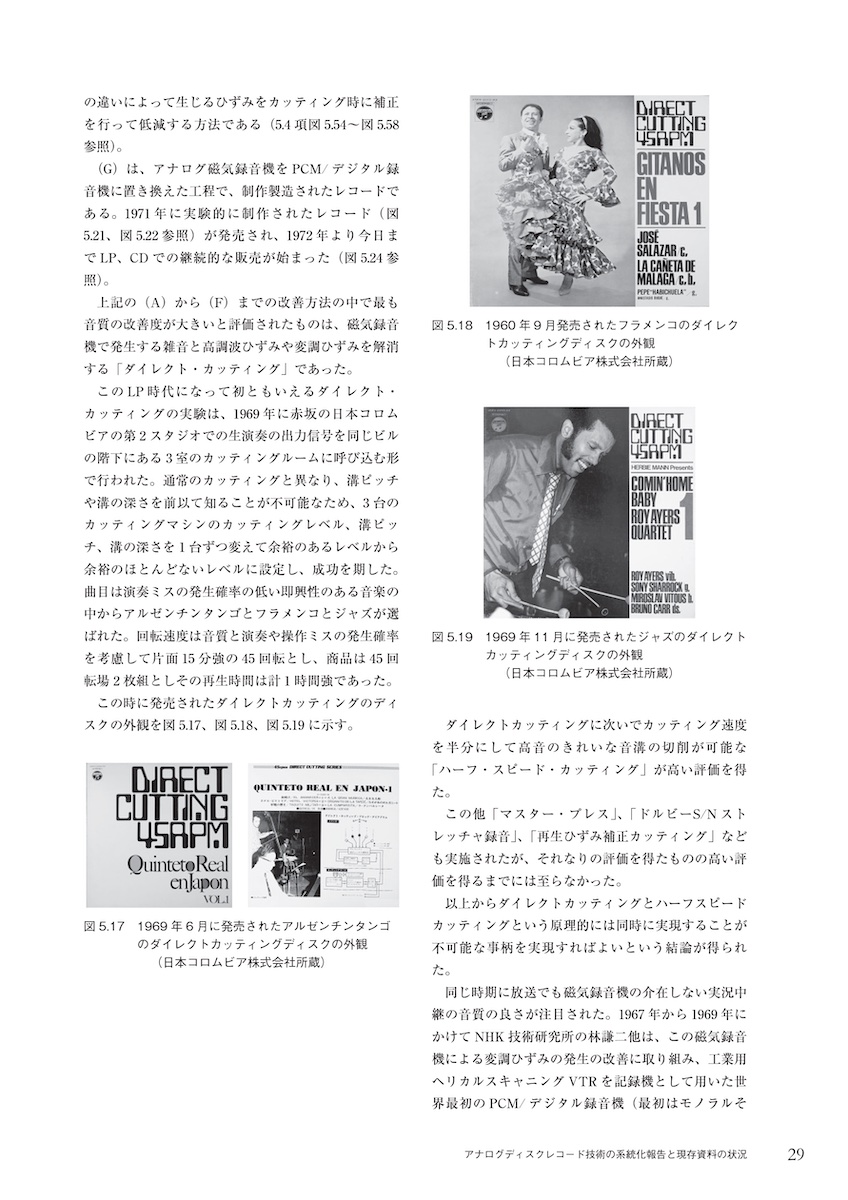
出典: “アナログディスクレコード技術の系統化報告と現存資料の状況”, 穴澤健明, 国立科学博物館 技術の系統化調査報告, 2014.
Postscript
As you can see, many of these copies from my collection come with White Label Promo label (for audio/music critics). I guess these records did not sell well, because Fango, Jazz and Flamenco were not popular for ordinary listeners in Japan.
ご覧のように、多くが関係者(オーディオ評論家、音楽評論家)向けの白レーベルプロモです。なかなか一般リスナー向けのレコードとはいえない内容ですから、当時はあまり売れなかったのではないでしょうか。
It was about twenty years ago when I found and bought 45PX-2008-AX. Later on, I knew it was one of the series containing six titles, and tried to find any info on other titles (thanks Google and Discogs). And finally, I could get the six albums – all with OBI.
そんな1969年の日本コロムビアのダイレクトカッティング45回転LP、Roy Ayers の1枚 (Vol.1) を20年くらいまえに捕獲したのが最初でしたが、その後実は6枚シリーズだったことを知り、こつこつ探してきた結果、やっと最後の6枚目として José Salazar のフラメンコ Vol.1 (45PX-2010-AX) を入手できました。
Please note (of course) that the “Direct-to-disc” itself doesn’t guarantee the superb recording: some of the Direct-to-disc records don’t sound good, don’t get mixed well. But as for these six titles (many of them are white label promos) really sounds superbly.
もちろん、ダイレクトカッティングだからといって、それだけで全て音がよくなるわけではありませんし、あまりよろしくないミキシング・再生音のダイレクトカッティング盤も一部あります。ただ、この1969年日本コロムビア盤については、どれも納得の好録音ではないかと。そして音楽的にもどれも本当に素晴らしい最上級のものです。関係者・評論家向け白レーベルはさすがに鮮烈な音がします。
First four of these six albums were re-issued later in 1976 – this time from DENON label. As you may know, the year 1976 was when many record labels started to produce Direct-to-disc albums from all over the world.
これら6枚のうち、タンゴとジャズの4枚は、1976年にDENONから再発されています。1976年といえば、国内外のレーベルからダイレクト・カッティング盤が次々とリリースされた時期ですね。
Around that time in the 1970s, the “Direct-to-disc” trend emerged – many titles were released from various labels, like Toshiba EMI, Victor, Nippon Columbia/DENON, King, Lobster (LOB), DAM (Daiichi Kaden), etc. from Japan, and Sheffield Lab, Telarc, Concord, M&K Realtime, etc. from US and Europe.
ちょうどその頃、1970年代中盤あたりに、全世界的にダイレクトカッティングのリリースブームが起こります。日本の東芝/ヴィクター/コロムビア/キング/ロブスター/DAM(第一家電)/etc.、欧米のテラーク/コンコード/シェフィールドラボ/M&Kリアルタイム/etc. と、枚挙にいとまがないほど次々リリースされていたようです。
Later in the later 1970s and early 1980s, PCM digital recordings were becoming common (DENON was the trend leader), and before the Digital Audio Disc (CD) days, Direct-to-disc records rapidly disappeared.
その後、1980年よりちょっと前から、DENON を先陣としてPCMデジタル録音が少しずつ現場に導入されはじめ、ダイレクトカッティングは一気に下火となってしまいました。

